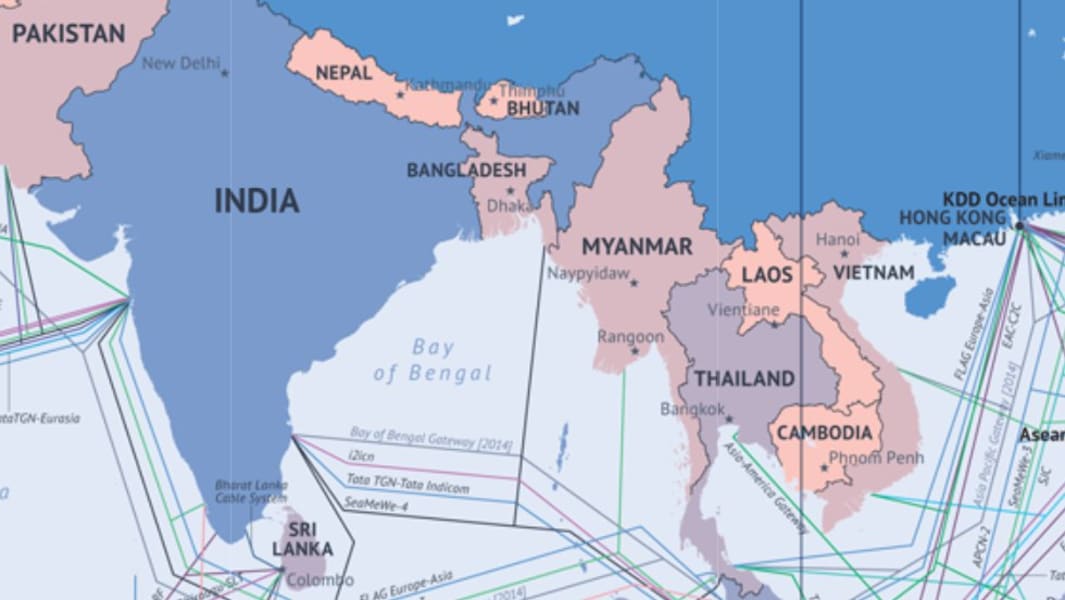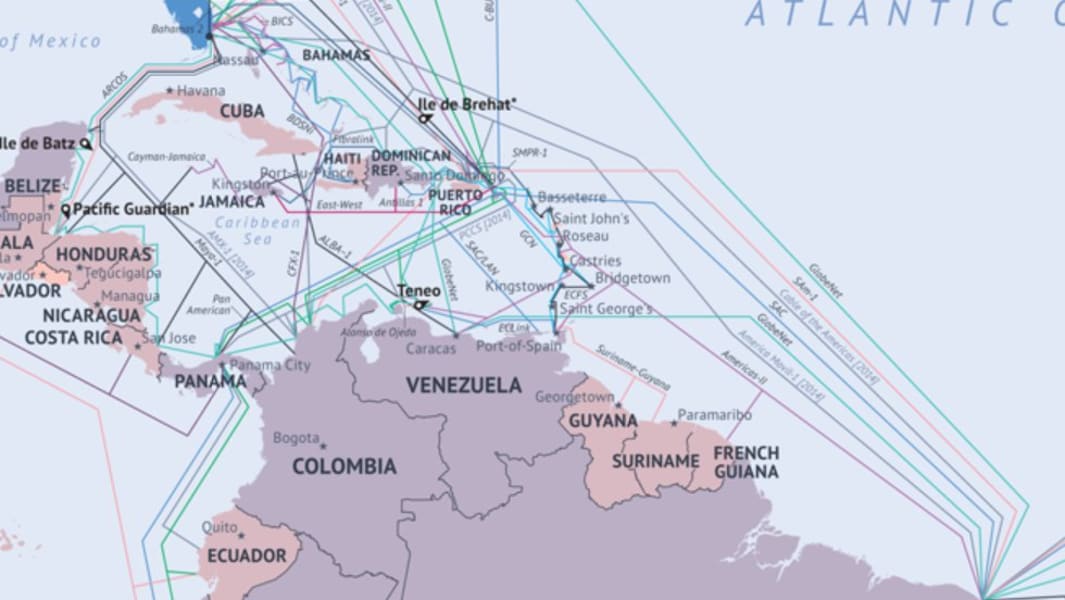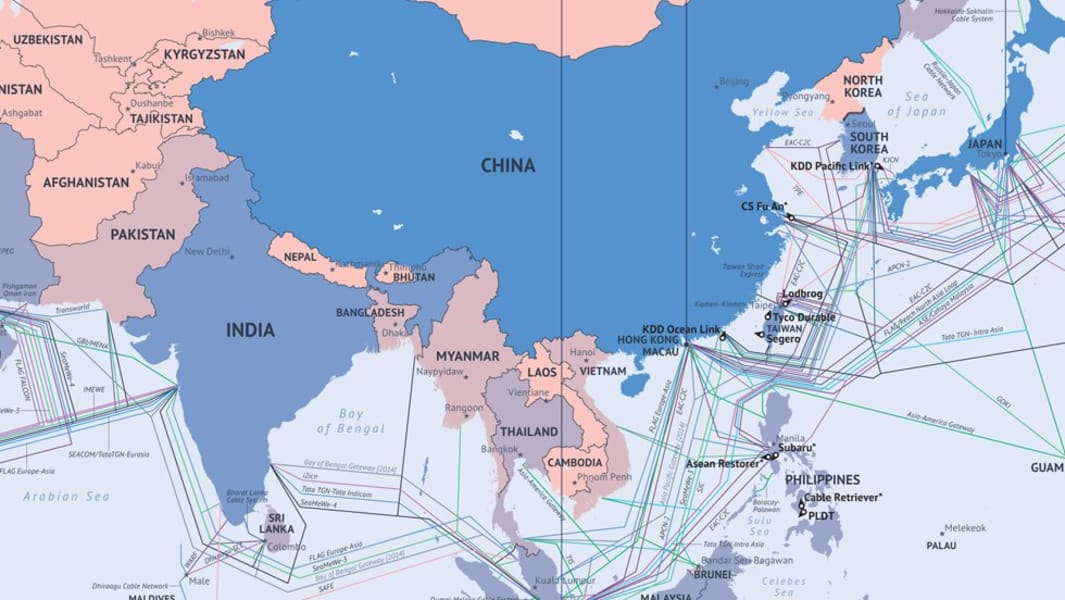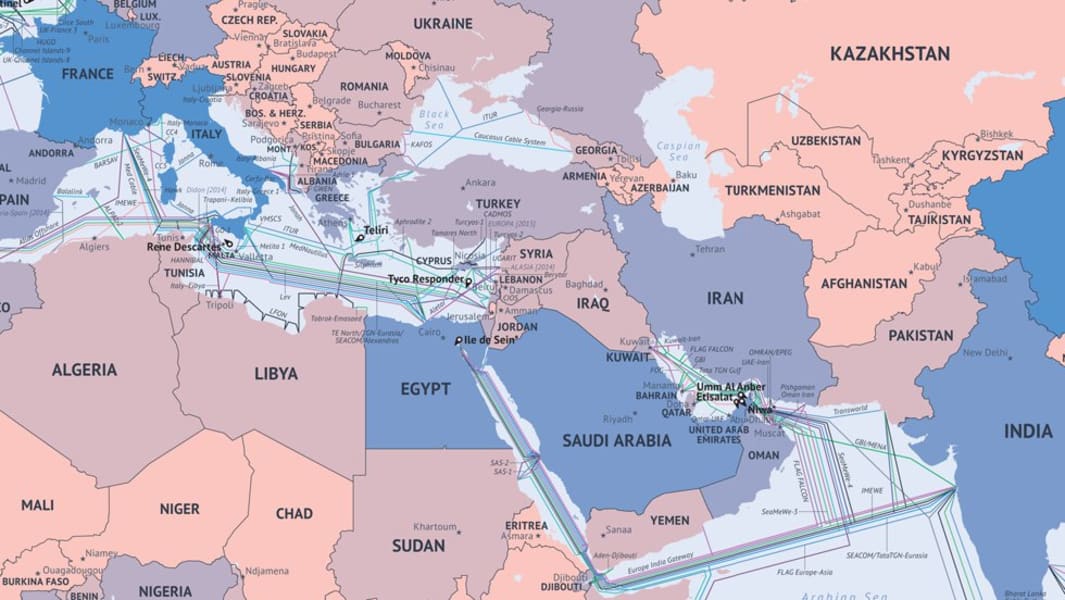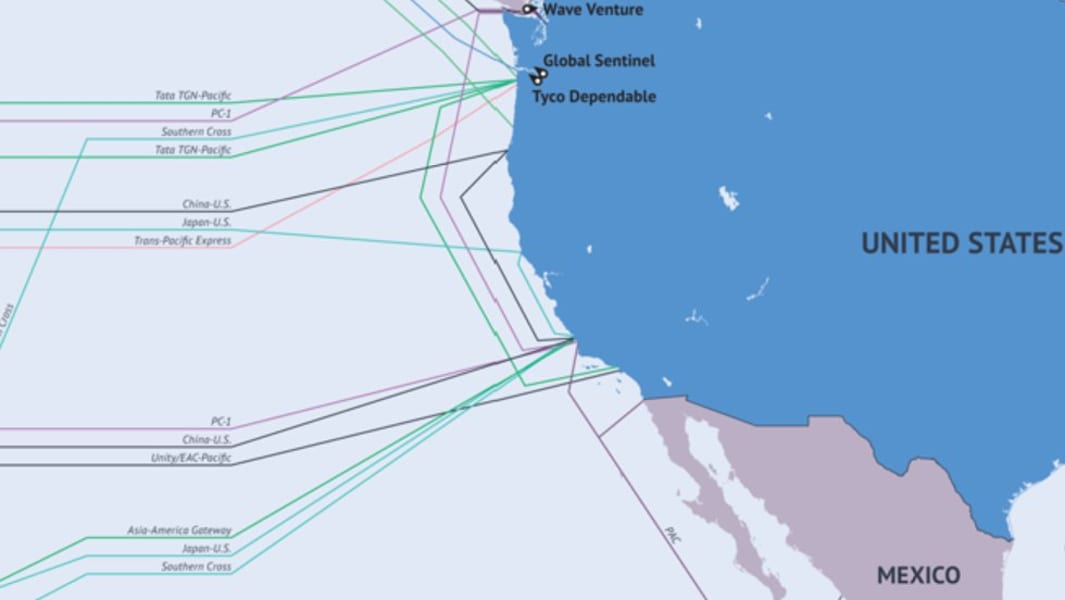Tech
What the Internet looks like: Undersea cables wiring ends of the Earth
Updated 1704 GMT (0104 HKT) January 2, 2015
Share


1 of 11
The information age is powered by thin fiber-optic cables buried in the sea bed, spreading between continents to connect the most remote corners of the planet. These great arteries account for practically all of our international web traffic, and each one has been logged by Washington research firm Telegeography in its interactive Submarine Cable Map 2014. The company's research director Alan Mauldin told CNN about the world's underwater networks. Click through the gallery to find out more.
- Interview by Kieron Monks courtesy TeleGeography
- Interview by Kieron Monks courtesy TeleGeography
CNN: Are we completely reliant on submarine cables?
Alan Mauldin: Yes, for international communications, over 99% is delivered by undersea cables. It's a common belief that satellites are the future of how things are carried, but that hasn't been the case for quite some time. Satellites are used for broadcasting, and are useful for rural communities and very remote places. The main advantage of cable is it's a lot cheaper. Satellite capacity is limited so it's very expensive. Cables can carry a massive amount of data by comparison so it's a lot cheaper.
courtesy TeleGeography
Alan Mauldin: Yes, for international communications, over 99% is delivered by undersea cables. It's a common belief that satellites are the future of how things are carried, but that hasn't been the case for quite some time. Satellites are used for broadcasting, and are useful for rural communities and very remote places. The main advantage of cable is it's a lot cheaper. Satellite capacity is limited so it's very expensive. Cables can carry a massive amount of data by comparison so it's a lot cheaper.
courtesy TeleGeography
CNN: Why is the network of cables growing so fast?
AM: Cables have been used as the main way to carry traffic since the Internet has been around. The change is more cables are being built to areas where they weren't before. In the past year, many cables were being built to the east coast of Africa, where it was all satellite. We're seeing cables to remote islands like Tonga and Vanuatu, bringing extremely small conurbations into the fiber network around the world. But there's still room for more cables to developed routes, as we need many on each path in case they break.
There are tons of cables between the major hubs of the world and you need different paths avoiding undersea fault zones, to land in different countries, and to avoid certain countries, for resilience and better performance.
courtesy TeleGeography
AM: Cables have been used as the main way to carry traffic since the Internet has been around. The change is more cables are being built to areas where they weren't before. In the past year, many cables were being built to the east coast of Africa, where it was all satellite. We're seeing cables to remote islands like Tonga and Vanuatu, bringing extremely small conurbations into the fiber network around the world. But there's still room for more cables to developed routes, as we need many on each path in case they break.
There are tons of cables between the major hubs of the world and you need different paths avoiding undersea fault zones, to land in different countries, and to avoid certain countries, for resilience and better performance.
courtesy TeleGeography
CNN: What are the major problems that occur?
AM: 75% of faults are due to external aggression -- the majority through human activity such as fishing, and ship's anchors. There are also geological factors such as sub-sea earthquakes and landslides, shifting tectonic plates and typhoons.
During the 2011 tsunami in Japan about half of their cables had outages, but the operators were able to reroute capacity to other routes, so Japan held up very well. Last spring, there was damage in Mediterranean cables that linked East Africa to Europe. But it was many years ago that there was last a complete blackout. courtesy TeleGeography
AM: 75% of faults are due to external aggression -- the majority through human activity such as fishing, and ship's anchors. There are also geological factors such as sub-sea earthquakes and landslides, shifting tectonic plates and typhoons.
During the 2011 tsunami in Japan about half of their cables had outages, but the operators were able to reroute capacity to other routes, so Japan held up very well. Last spring, there was damage in Mediterranean cables that linked East Africa to Europe. But it was many years ago that there was last a complete blackout. courtesy TeleGeography
CNN: How much damage can they do?
AM: In recent years the countries that have had impaired access are the ones with just one or two cables in place. African countries have been more at risk if there's an outage. Most countries are keen to provide reliable service and make efforts to have multiple paths. Islands like Tonga only have one cable so clearly if that's damaged they are stuck. Very few sizable populations rely on one or even two cables. Some may only have one but a terrestrial link as well
courtesy TeleGeography
AM: In recent years the countries that have had impaired access are the ones with just one or two cables in place. African countries have been more at risk if there's an outage. Most countries are keen to provide reliable service and make efforts to have multiple paths. Islands like Tonga only have one cable so clearly if that's damaged they are stuck. Very few sizable populations rely on one or even two cables. Some may only have one but a terrestrial link as well
courtesy TeleGeography
CNN: How close to capacity are the cables?
AM: There is plenty of room to grow. There are about 13 cables in service across the Atlantic, and less than 20% of potential capacity is what we call "lit" or in service right now. There have been no new cables in the Atlantic since 2003, but the use is low because technology is advancing so that that potential capacity is increasing at the same time as use. Operators are constantly equipping the cables to carry more data. They can add more wavelengths which enhances the bit rates. There is no threat of exhaustion. courtesy TeleGeography
AM: There is plenty of room to grow. There are about 13 cables in service across the Atlantic, and less than 20% of potential capacity is what we call "lit" or in service right now. There have been no new cables in the Atlantic since 2003, but the use is low because technology is advancing so that that potential capacity is increasing at the same time as use. Operators are constantly equipping the cables to carry more data. They can add more wavelengths which enhances the bit rates. There is no threat of exhaustion. courtesy TeleGeography
CNN: Is there much variation in cable performance?
AM: Oh sure: cables in the Atlantic have a higher capacity than a cable going down the coast of East Africa. Capacity depends on the market sets the cables are serving. Not to say the cables in Africa are less useful, in fact many are newer, it's just that the demand for capacity thus far has not been as high. Africa is in pretty good shape because multiple new cables have been laid so capacity can grow for many years to come, and cables are designed to last for a minimum 25 years. Once you build a cable the cost of buying capacity incrementally over time is very affordable.
courtesy TeleGeography
AM: Oh sure: cables in the Atlantic have a higher capacity than a cable going down the coast of East Africa. Capacity depends on the market sets the cables are serving. Not to say the cables in Africa are less useful, in fact many are newer, it's just that the demand for capacity thus far has not been as high. Africa is in pretty good shape because multiple new cables have been laid so capacity can grow for many years to come, and cables are designed to last for a minimum 25 years. Once you build a cable the cost of buying capacity incrementally over time is very affordable.
courtesy TeleGeography
CNN: What is the cost?
AM: The last cable across the Pacific cost $300 million; one cable that entered service last year in Asia reaching many locations cost $400 million. The cost is largely due to length but also how much it is on land. A complicated cable that lands in 10 different countries with thousands of kilometers per link will cost much more than one linking just two points.
courtesy TeleGeography
AM: The last cable across the Pacific cost $300 million; one cable that entered service last year in Asia reaching many locations cost $400 million. The cost is largely due to length but also how much it is on land. A complicated cable that lands in 10 different countries with thousands of kilometers per link will cost much more than one linking just two points.
courtesy TeleGeography
CNN: Where is there still need? Are we close to complete?
AM: Basically we have now wired the ends of the Earth, almost. What's left is generally very remote island communities. Absolutely there can be improvements, having one cable is often not enough, we need to have multiple cables to provide a balanced and reliable way to access the world; it's not good enough anymore to have a cable out of service for weeks if it gets damaged. If you're a user in that country it's not acceptable, you expect seamless high quality net access all the time.
In Europe, the U.S. and Asia people don't have to think "what happens if Internet goes down and I can't send an important email?" That has disappeared. You don't think about it. But if you're in Bangladesh you still worry. Every country is seeking to provide users with high-quality resilient Internet access such that the role of submarine cable fades into the background and you don't think about them. If a cable is cut there are different paths to back it up. courtesy TeleGeography
AM: Basically we have now wired the ends of the Earth, almost. What's left is generally very remote island communities. Absolutely there can be improvements, having one cable is often not enough, we need to have multiple cables to provide a balanced and reliable way to access the world; it's not good enough anymore to have a cable out of service for weeks if it gets damaged. If you're a user in that country it's not acceptable, you expect seamless high quality net access all the time.
In Europe, the U.S. and Asia people don't have to think "what happens if Internet goes down and I can't send an important email?" That has disappeared. You don't think about it. But if you're in Bangladesh you still worry. Every country is seeking to provide users with high-quality resilient Internet access such that the role of submarine cable fades into the background and you don't think about them. If a cable is cut there are different paths to back it up. courtesy TeleGeography
CNN: What are the next big cables?
AM: America Movil's Carlos Slim-backed cable linking the U.S. with Mexico and many Latin American countries should be ready this year. Another later this year connects India and Malayisa. We look as far ahead as people have publicly announced; one connecting the UK and Japan is set for the first quarter of 2016.
courtesy TeleGeography
AM: America Movil's Carlos Slim-backed cable linking the U.S. with Mexico and many Latin American countries should be ready this year. Another later this year connects India and Malayisa. We look as far ahead as people have publicly announced; one connecting the UK and Japan is set for the first quarter of 2016.
courtesy TeleGeography
How comprehensive is your map? What's missing?
AM: Our map is updated all the time. We have all the cables in service, and receive feedback all the time from people saying "hey, you're missing a cable here." We hope it's as reliable as possible. I wouldn't say it's perfect, it might lack some smaller domestic cables, but for international systems -- the big ones -- it's comprehensive.
We also include cables that are planned -- sometimes these will be built and sometimes that won't happen. We keep up with deactivation -- sometimes cables are turned off, [if they are] too expensive to maintain or not running to capacity.
See Telegeography's interactive map here
courtesy TeleGeography
AM: Our map is updated all the time. We have all the cables in service, and receive feedback all the time from people saying "hey, you're missing a cable here." We hope it's as reliable as possible. I wouldn't say it's perfect, it might lack some smaller domestic cables, but for international systems -- the big ones -- it's comprehensive.
We also include cables that are planned -- sometimes these will be built and sometimes that won't happen. We keep up with deactivation -- sometimes cables are turned off, [if they are] too expensive to maintain or not running to capacity.
See Telegeography's interactive map here
courtesy TeleGeography
